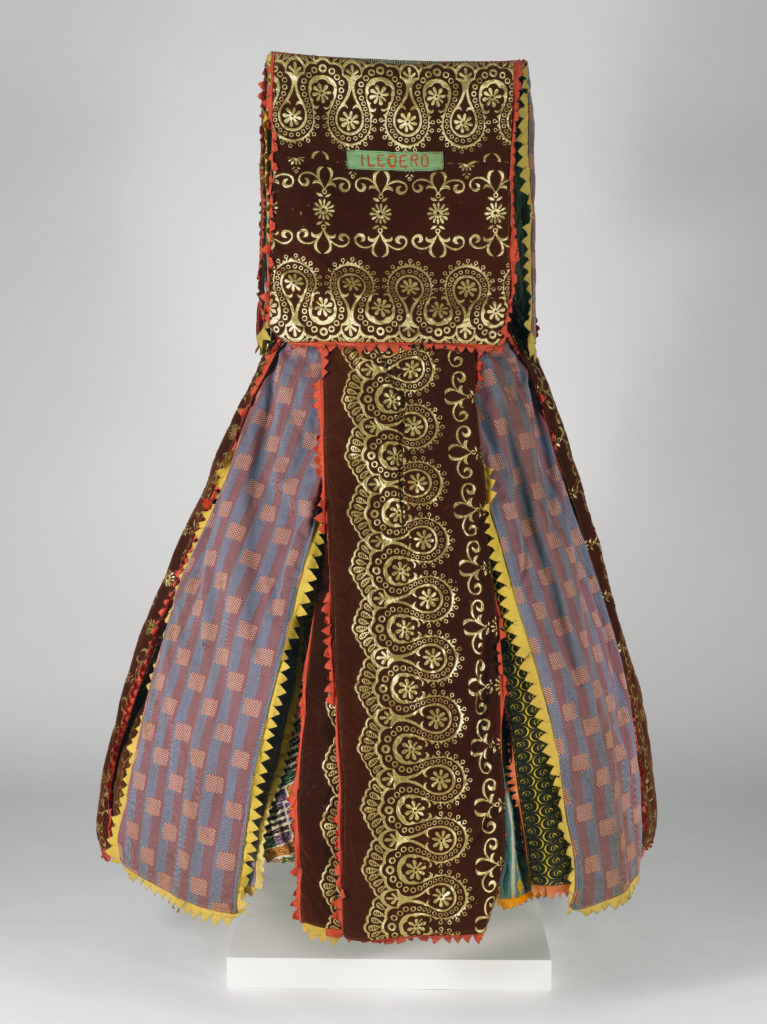Egúngún Masquerade Ensemble (work of art)
Artwork Info
Key Ideas
- This egúngún masquerade costume consists of decorative cloth, gloves, foot covers, and a mesh face screen that would cover the performer’s body. The full-body costume would transform the person wearing it into a “returned Yorùbá ancestor” and connect the living world with the spiritual world.
- The word “egúngún” means “powers concealed.” It refers to the masquerade itself and to the ancestors’ supernatural powers.
- Egúngún masquerades are often performed at yearly festivals that honor the ancestors and seek blessings for the community.
Learn More
Egúngún masquerades originated in Nigeria among the Yorùbá peoples. The Yorùbá make up the largest ethnic group in Africa. The egúngún masquerade ceremony is now honored and performed in Africa and throughout the world, from the Republic of Benin and Sierra Leone to parts of the Caribbean and the Americas.
The Yorùbá honor their ancestors during this annual ceremony. The artist who made this costume decorated its panels with designs from Yorùbá, Islamic, and European traditions. The dancer who wore it could see through the mesh face panel. The face panel is decorated with cowrie shells, beads, and coins. This person would have spun rapidly, making the fabric panels open to show the costume’s colorful layers. The layers of these costumes are built up over time. Patrons purchase luxurious, expensive cloth to be added to the costume. Sometimes the fabric is locally produced. Other times it is imported. For the Yorùbá, the costume represents the importance of the ancestor spirits. It is also a statement of status for the patron.
The movements, gestures, and playful actions that would accompany an egúngún masquerade performance are missing from this costume in its current museum form.
Additional Resources
Resources for Teachers:
- Read a short article about African masks.
- Explore a lesson plan that highlights another egúngún masquerade costume at the NCMA.
- Watch a video about the egúngún masquerade and festival.
Resources for Students:
- Watch a time-lapse video of the African gallery installation at the NCMA.
- Watch a video of an egúngún masquerade.
- Explore another egúngún masquerade dance costume.


